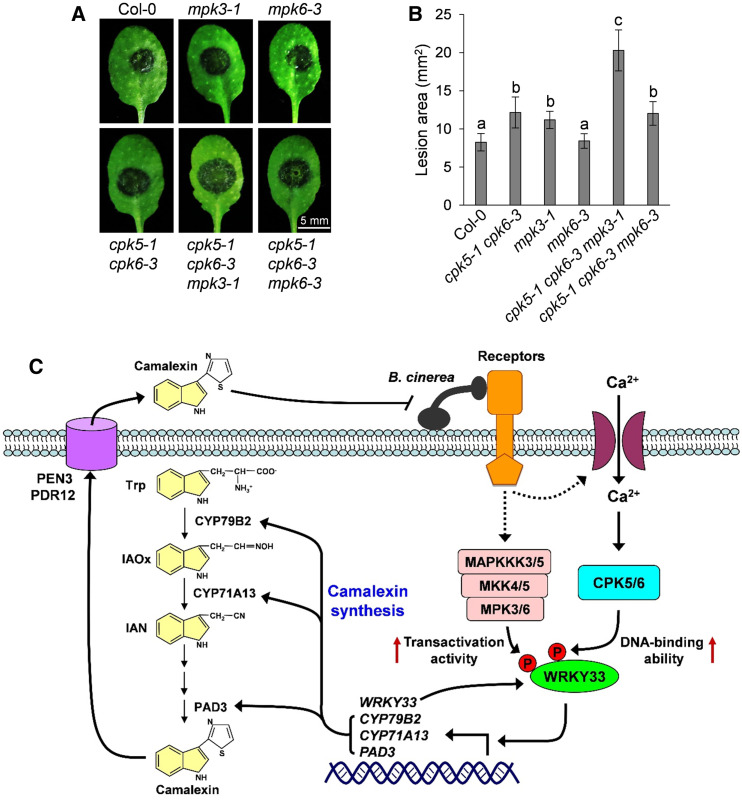Figure 9.
CPK5/CPK6 and MPK3/MPK6 Cooperatively Regulate Arabidopsis Resistance to B. cinerea.
(A) and (B) Additive contribution of CPK5/CPK6 and MPK3/MPK6 to B. cinerea resistance. Fully developed leaves of 4-week-old Col-0 and mutant plants indicated were inoculated with droplets of B. cinerea spore suspension. Leaf images were taken at 48 h postinoculation (A). Meanwhile, lesion size was quantified (B). Error bars indicate sd (n = 20 leaves from different plants of each genotype), and different letters above the columns in (B) indicate significant differences (P < 0.05), as determined by one-way ANOVA. The experiments were independently repeated three times with similar results.
(C) A model depicting the cooperative regulation of camalexin biosynthesis and B. cinerea resistance by CPK5/CPK6 and MPK3/MPK6. B. cinerea infection triggers the activation of CPK5/CPK6 and MPK3/MPK6, which in turn phosphorylate their convergent substrate WRKY33. CPK5/CPK6- and MPK3/MPK6-mediated phosphorylation of WRKY33 enhances its DNA binding and transactivation activities, respectively. WRKY33 autoactivates its own transcription to amplify the immune signal. The activated WRKY33 further upregulates the expression of camalexin biosynthetic genes including CYP79B2, CYP71A13, and PAD3 to drive the synthesis of camalexin, which is then exported to the extracellular space by PEN3 and PDR12 transporters to defend against B. cinerea.

